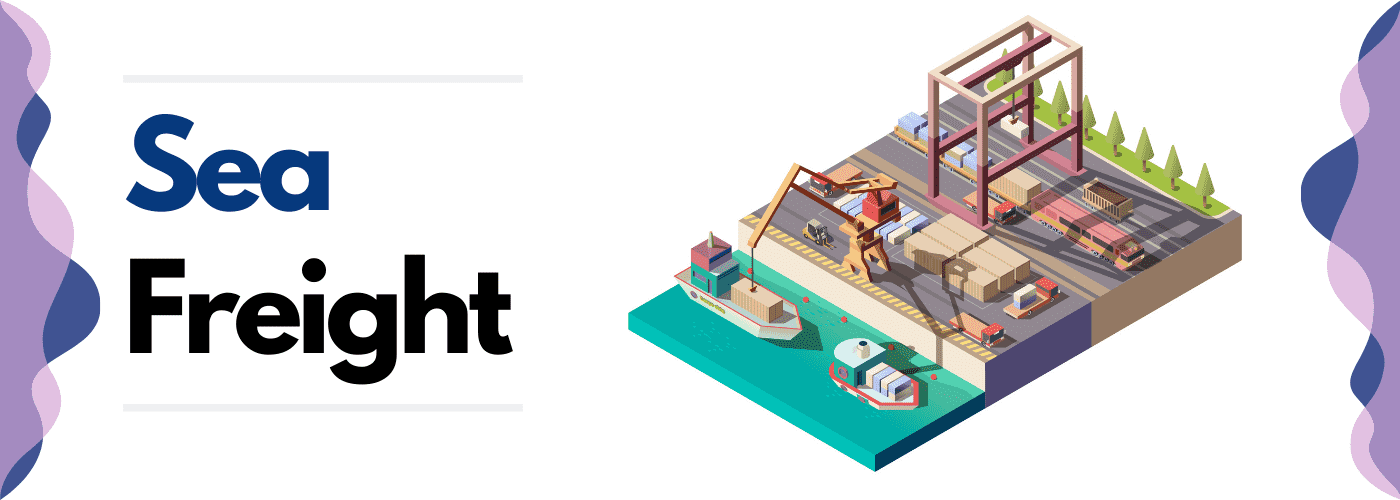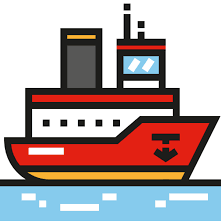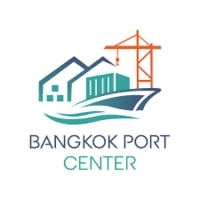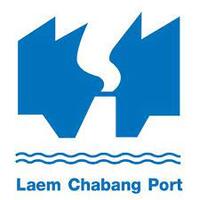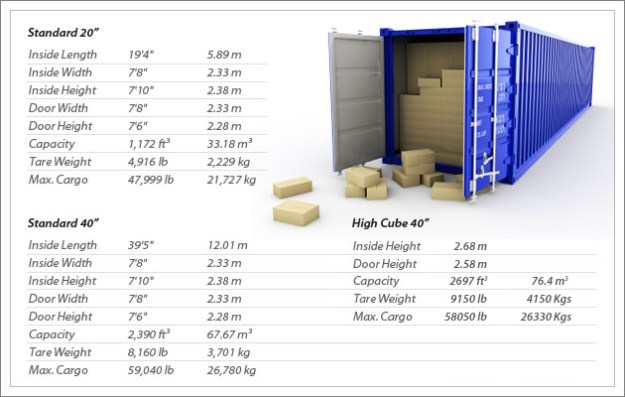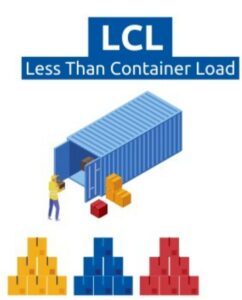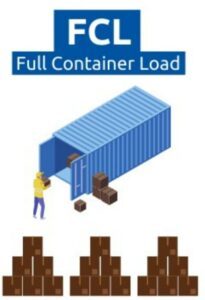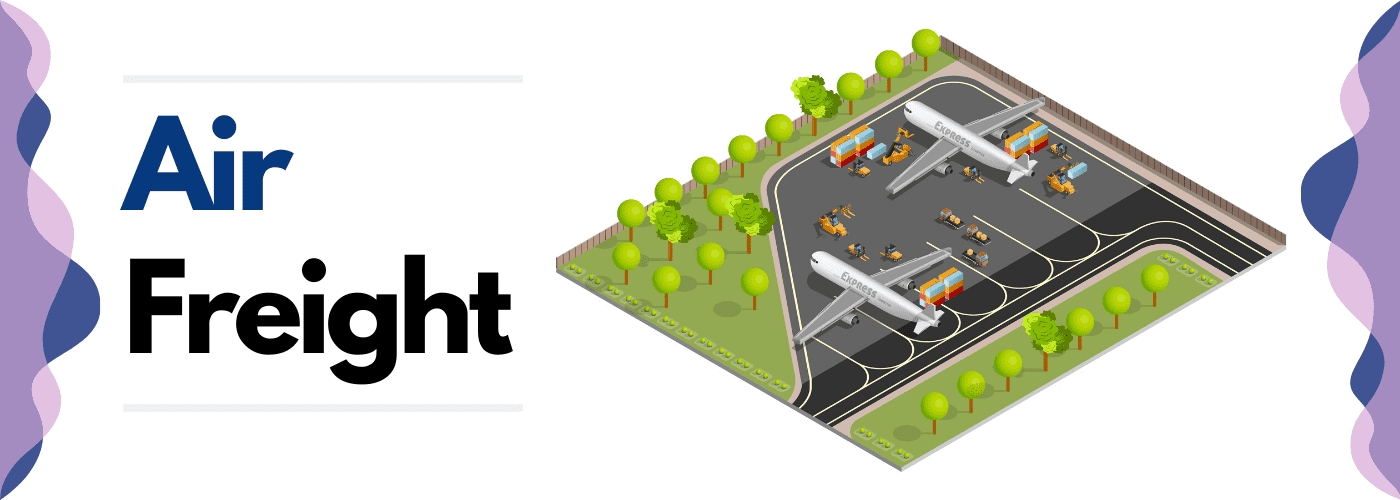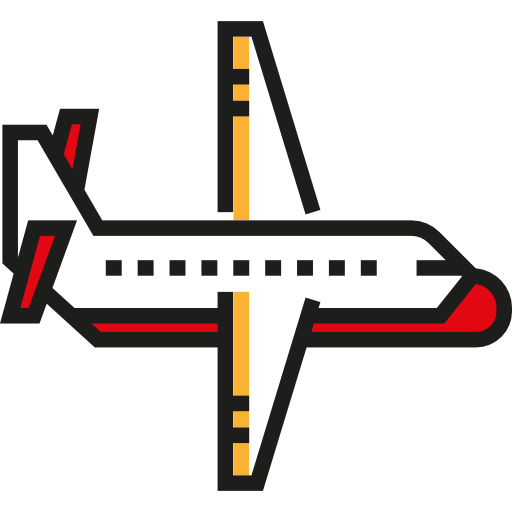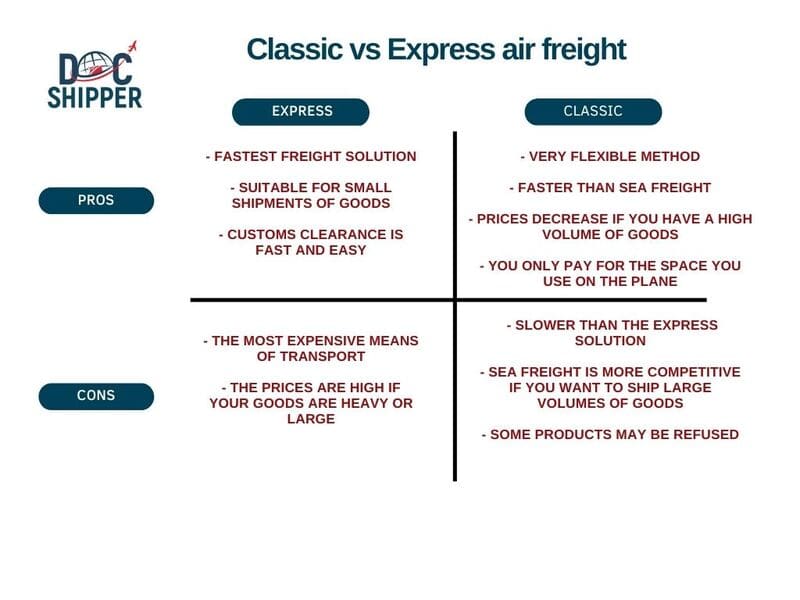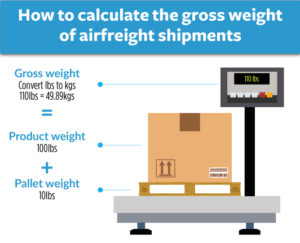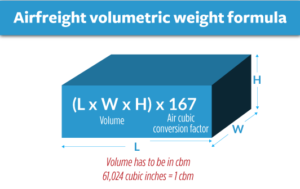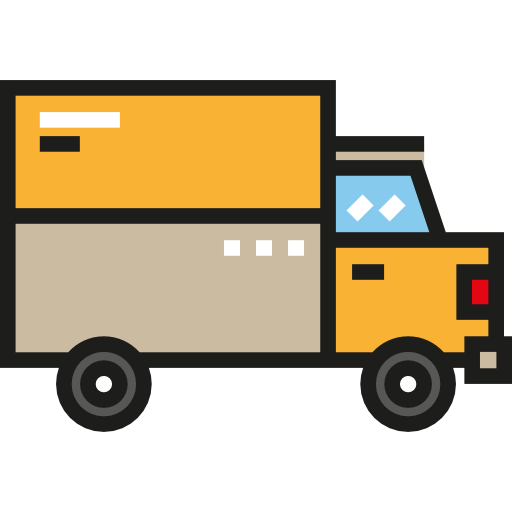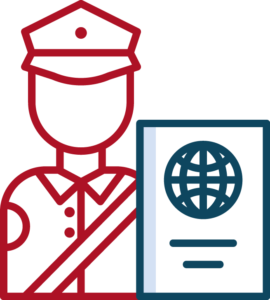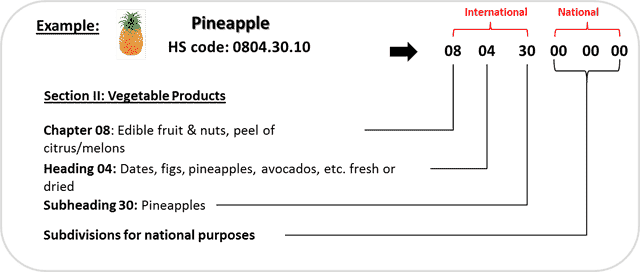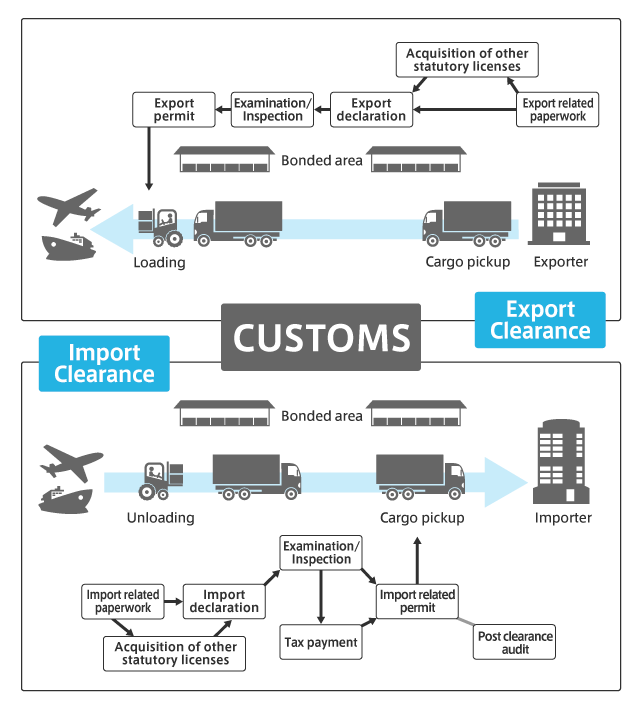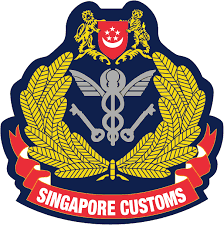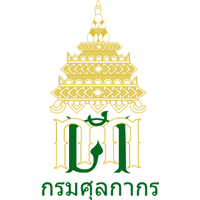The business relationship between Thailand and Singapore has traditionally been fruitful and distinguished by close economic connections. Both nations have a history of collaboration and involvement in a number of fields.The main products exported by Thailand to Singapore are electronic products,Chemicals, food products, textiles and apparel, wood products.
This guide will help you in your export steps in Singapore from Thailand. You will be able to easily choose the most suitable means of transportation, understand the customs clearance process, and receive valuable advice from our experts at Siam Shipping.
Table of Contents
What is the most suitable method of transport between Thailand and Singapore?
There are 4 modes of transport, air freight, sea freight, road freight, and rail freight. However, in the situation of Singapore to Thailand, the railway modality does not exist, at least not yet, and road freight between Thailand and Singapore can be a practical substitute for shipping products, especially for particular cargoes and situations. Road transportation can provide benefits in some circumstances, even if air freight and sea cargo are the main routes of transit between these two nations. Air freight, sea freight, and land transport are the best options for moving goods between Thailand and Singapore. Although there is now no rail freight service between Singapore and Thailand, there have been proposals and discussions for future rail connections in the area. The goal of projects like the Singapore-Kunming Rail Link project is to provide rail links between Singapore, Thailand, and other Southeast Asian nations. Land transport is utilized to move commodities to neighboring regions whereas sea freight is more economical for larger shipments and bulk items. Due to logistics needs, product characteristics, and delivery schedules, businesses frequently combine these strategies.
Sea freight from Thailand to Singapore
Ocean freight will be the best deal for you if :
- Your goods are bigger than 2 CBM
- You’re not in a hurry to receive them
- You want to ship specific goods (batteries, vehicles…)
Remark Siam Shipping: Contact us now! Your personal Siam advisor will find out a customized solution for your import process between Thailand & Singapore.
TOP 5 – Shipping line

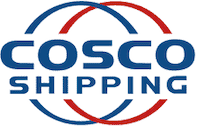


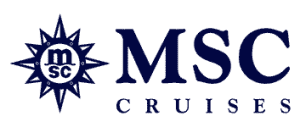
Overview – Ocean cargo from Thailand to Singapore
Remark Siam Shipping : This is the most efficient freight solution when taking into account the three key factors of transportation; time, security, and cost.
Bilateral relations between Singapore and Thailand
Singapore and Thailand's bilateral ties have consistently remained strong and are characterized by considerable economic cooperation, foreign investment, and cultural exchanges. As a prominent trade partner and investor, Singapore significantly contributes to Thailand's economic development. Both nations actively participate in ASEAN (Association of Southeast Asian Nations) regional programs that encourage economic integration and ease commerce. Together, they handle defense and security matters, taking part in military training drills and exchanging information to address widespread security worries. The close relationship between Singapore and Thailand goes beyond just matters of business and national security because of their support of one another's cultural and educational endeavors. These measures contribute to a successful alliance defined by robust sectoral engagement and active participation in regional organizations by further solidifying the ties between the two countries.
Main ports in Singapore
Port of Singapore
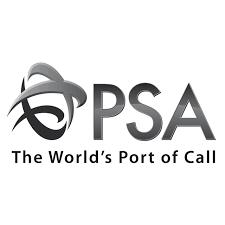 One of the busiest and most significant ports in the world is the Port of Singapore. It includes a number of ports and buildings situated alongside the Singapore Strait. Containers, bulk goods, and petroleum products are only a few of the cargo types handled by the port. It is renowned for its effectiveness, cutting-edge facilities, and accessibility to major shipping lanes. A significant transshipment center, the Port of Singapore links several areas and promotes smooth commercial movements. Its extensive capabilities, which include cutting-edge container handling, warehousing, and logistics solutions, make it a desirable option for global shipping firms.
One of the busiest and most significant ports in the world is the Port of Singapore. It includes a number of ports and buildings situated alongside the Singapore Strait. Containers, bulk goods, and petroleum products are only a few of the cargo types handled by the port. It is renowned for its effectiveness, cutting-edge facilities, and accessibility to major shipping lanes. A significant transshipment center, the Port of Singapore links several areas and promotes smooth commercial movements. Its extensive capabilities, which include cutting-edge container handling, warehousing, and logistics solutions, make it a desirable option for global shipping firms.
Jurong Port
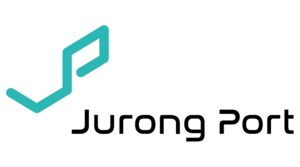 The important port of Jurong Port is situated in Singapore's southwest. It mostly handles bulk and general goods, such grains, iron ore, and coal. In order to sustain the Jurong Industrial Estate's businesses and advance Singapore's economy, Jurong Port is essential.Jurong Port provides a seamless flow of commodities. It is a key entry point for the import and export of bulk commodities, making a considerable contribution to Singapore's trading activity.
The important port of Jurong Port is situated in Singapore's southwest. It mostly handles bulk and general goods, such grains, iron ore, and coal. In order to sustain the Jurong Industrial Estate's businesses and advance Singapore's economy, Jurong Port is essential.Jurong Port provides a seamless flow of commodities. It is a key entry point for the import and export of bulk commodities, making a considerable contribution to Singapore's trading activity.
Singapore also has a future development project : the Tuas Port, to centralize all of Singapore's container port operations in Tuas, the country's western region. After it is finished, Tuas Port will be the world's biggest completely automated container port, further solidifying Singapore's status as a major maritime center.
Main ports in Thailand
The Port of Bangkok
The Port of Bangkok is the largest port in Thailand, located on the Chao Phraya River in Bangkok. It is connected to the national railway system and has several docks for loading and unloading containers.
Map Ta Phut Port
Located in Rayong province, the Map Ta Phut Port is on the east coast of Thailand, this port is an important center for the country's petrochemical industry. It has a rail yard and is connected to the national rail network.
Laem Chabang Port
The Laem Chabang Port is located about 130 kilometers southeast of Bangkok in Chonburi province. It is the second-largest port in Thailand and is connected to the national.Railway network for the transportation of goods to the interior of the country.
Chiang Saen Port
The Chiang Saen Port is located on the Mekong River in Chiang Rai province, near the border with Laos. It is used for the transport of goods between Thailand and the neighboring countries, in particular Laos and China.
Transit time between Singapore ports and Thailand ports
Here is a summary table of the average transit times, in days, between the largest Singapore and Thai ports.Bangkok
| Bangkok | Map Ta Phut Port | Laem Chabang Port | Chiang Saen Port | |
| Singapore | 2 days | 3 days | 2 days | 3 days |
| Jurong | 2 days | 3 days | 2 days | 3 days |
*Please note that these transit times are indicative and may vary according to various factors.
Should I ship by groupage or full container between Singapore and Thailand?
There are three main categories of standard container sizes:
- The 40-foot HQ (High Cube), with a capacity of 76 cubic meters.
- The 40-foot container, with a capacity of 67 cubic meters.
- The 20-foot container, with a capacity of 33 cubic meters.
Each of these containers can be shipped by two different transportation methods.
LCL
Less than Container Load: This type of shipment, allows several people, who do not have enough goods to fill an entire container, to use the same container. The goods of various people are thus combined to fill an entire container.
This is the most cost-effective choice for small shipments of less than 15 m³.
Advantages of LCL
- The advantageous rate for small volumes.
- Allows for fewer but more frequent shipments, reducing storage expenses.
- Costs savings
Disadvantages of LCL
- Often longer delivery times due to loading and unloading of goods from all customers.
- Increased risk of loss and damage from multiple loading and unloading.
- Cargo under limited control
- Documentation and Customs Clearance
FCL
Full Container Load: For this type of shipment, one person will use the entire capacity of the container. This minimizes the risk of damage to the goods.
This method would still be advantageous even if you did not fill the container completely. However, it is the most cost-effective for shipments over 15 m³.
Advantages of FCL
- The advantageous rate for large shipments of goods.
- Reduced risk of damage or loss of goods because containers are not opened during transit.
- Faster Transit Times
- Flexibility in Loading
Disadvantages of FCL
- A minimum volume of at least 15 m³ to be profitable.
Siam Shipping Alert: There are certain risks associated with LCL loading. During sea freight, your purchases may be damaged. Also, if your container partner encounters difficulties with customs during clearance, your customs clearance procedure may be delayed as well. Don't hesitate to contact us if you have any questions.
Special transports by sea between Thailand and Singapore
Reefer container
A reefer container is made particularly for the transportation of perishable goods or chemicals that need to be transported at specified temperatures. It has a cooling system that enables the maintenance of particular temperature ranges during the course of the shipment. This guarantees that delicate items, such farm fresh food, prescription medications, or certain chemicals, remain in top condition during shipping.
Roro
Vehicles such as automobiles, trucks, vans, semi-trailers, and even rail carriages may all be transported on RORO (Roll On/Roll Off) boats. These ships include platforms or ramps that enable vehicles to be driven or rolled straight onto and off of the ship. As they make loading and unloading easier and reduce handling dangers, RORO boats are regarded as one of the safest and most effective methods of transport for large or unusual goods.
Bulk
Vehicles such as automobiles, trucks, vans, semi-trailers, and even rail carriages may all be transported on RORO (Roll On/Roll Off) boats. These ships include platforms or ramps that enable vehicles to be driven or rolled straight onto and off of the ship. As they make loading and unloading easier and reduce handling dangers, RORO boats are regarded as one of the safest and most effective methods of transport for large or unusual goods.
OOG
OOG cargo is cargo that exceeds the dimensions of a standard container. Two types of containers exist for these goods:
- Open Top Container: they have no roof, which allows loading cargo that exceeds the height of the containers.
- Flat Rack Container: these are flat containers without side walls or roofs, used for goods that cannot be loaded in standard containers.
How much does the sea freight cost between Thailand and Singapore?
The cost of sea freight between Singapore and Thailand will depend on several factors such as the type of cargo being shipped, the volume and weight of the cargo, the distance between the ports of origin and destination, the shipping method, and the current market conditions.
In general, the average cost of shipping a 20-foot container (TEU) from Singapor to Thailand is approximately US$900 to US$1200, depending on the shipping company, the port of origin and destination, and the time of year.
It is possible to estimate the cost if you know the exact weight and volume of your goods. To do this, you must follow these 3 steps:
- Determine the PU (Paying Unit): for this, you need to compare the mass and volume of your cargo based on the theory of sea freight, which states that one ton = 1 m³. The higher value between volume and mass will be the UP. For example, for a volume of 20 m³ and a mass of 25 tons, the UP will be 25 tons.
- Calculate the basic freight: to do this, multiply the cost of the UP by its number.
- Calculate the net freight: with the following formula, Base freight + BAF + CSP - Rebate. The result will be the cost of your sea freight.
Tariff surcharges
Tariff surcharges may apply on your transport between Singapore and Thailand, here are the main ones:
- Bunker Adjustment Factor (BAF): This surcharge is applied according to fluctuations in the price of fuel and may vary regularly depending on market conditions.
- Security Surcharge (SCS): This surcharge is applied to cover costs related to port and vessel security.
- Overcapacity surcharge (OWS): This surcharge is applied when demand for shipping is lower than supply, resulting in excess vessel capacity.
- Congestion surcharge (CGS): This surcharge is applied in ports where congestion is high, resulting in extended waiting times for ships.
Air freight from Thailand to Singapore
Air freight will be the most efficient solution if :
- Your goods are smaller than 2 CBM and 200 kg
- You’re in a hurry to receive/send the goods
Remark Siam Shipping: Naturally, if you need to get your goods delivered as fast as possible, air freight is the best option for you. You are in the rush? Contact our Siam Expert now!
Remark Siam Shipping: Air freight is the best option when time is key.
Classic or Express air freight
There are two types of air freight:
- Classic air freight: This option uses the space available on board commercial flights of airlines such as Singapore Airlines, Thai Airways, Cathay Pacific, or even Emirates SkyCargo, and exploits the empty spaces.
- Express airfreight: This option uses aircraft dedicated solely to airfreight. This solution is offered by courier companies, such as FedEx, DHL, UPS, or even TNT, which offers door-to-door solutions.
Main airport in Singapore
Changi Airport
The key center for airfreight operations is Changi Airport, Singapore's largest international airport. It features facilities and terminals specifically for carrying cargo, like as the Changi Airfreight Centre (CAC), which manages a sizable amount of air cargo. Changi Airport serves as a key center for airfreight in the area because to its large network of airlines and cargo service providers.
Main airports in Thailand
Suvarnabhumi Airport

Additional information:
- It has the highest control tower in the world.
- Its terminal is the third largest in the world with 56.3 hectares.
- Forecasted increase in cargo and aviation capacity.
Don Mueang Airport
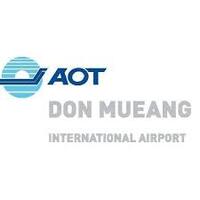
Additional information:
- 700,000 tons of cargo were handled by this airport.
- It worked with 80 airlines
Chiang Mai Airport
Although Chiang Mai Airport is not as large as Bangkok Airport, it plays an important role in the logistics of the northern region of Thailand by providing direct connections to major domestic and international destinations.
Additional information:
- 16,000 tons of annual cargo
- More than 15,000 flights and 2,000,000 passengers annually
Transit time between Singapore airport and Thailand airports
Here is a summary table of the average transit times, in hours, between the largest Singapore and Thai airports.
| Suvarnabhumi | Don Mueang | Chiang Mai | |
| Singapore | 2 hours | 2 hours | 2 hours |
*Veuillez noter que ces temps de transit sont indicatifs et peuvent varier en fonction de divers facteurs.
What are the advantages of air freight?
- Speed of transport
- Rarely late
- Good geographical coverage
What are the disadvantages of air freight?
- High price
- Not possible to transport really heavy goods
- The security at the airport is much higher which can make you lose time during the control
How much does it cost to transport cargo by air from Thailand to Singapore?
Depending on a number of variables, the cost of air freight from Thailand to Singapore might vary. These considerations include the cargo's weight and volume, its nature, any special handling needs, the airline or freight forwarder of choice, and the state of the market.
The chargeable weight of the cargo, which is either the actual weight or the volume weight, whichever is larger, is commonly used to calculate airfreight charges. The cargo's dimensions are used to compute the volume weight. Additionally, extra expenses for services like customs clearance, insurance, and handling costs could apply.
To obtain an accurate cost estimate for your specific cargo, it is recommended to reach out to airlines or freight forwarders that offer airfreight services between Thailand and Singapore. They will be able to provide you with a detailed quote based on the specific details of your shipment. It's advisable to compare prices and services from multiple providers to ensure you get the best value for your transportation needs.
It is advised to get in touch with airlines or freight forwarders who provide airfreight services between Thailand and Singapore if you want a precise pricing estimate for your particular cargo. Based on the particulars of your cargo, they will be able to provide you a precise price. To make sure you receive the most value for your transportation needs, it is essential to evaluate the costs and services of several suppliers.
Siam Shipping Advice: It can be difficult to estimate the exact price of your airfreight shipment yourself. Contact us to receive a free quote within 24 hours.
How to calculate the volumetric weight of your shipment?
The volumetric weight is the volume occupied by a package, based on its dimensions and its gross weight. To know it, you must measure the dimensions of the package (length, width, and height), then convert them into cubic meters. Then use the formula below:
Volumetric weight = (length x width x height) / 5000
Siam Shipping Advice: We recommend using air freight for fragile, valuable, or perishable goods to increase security and protect your merchandise. You can get in touch with our specialists for further details if you want to learn more about transporting fragile merchandise.
Cross border to Singapore
Road freight will be the most convenient option if:
- Your supplier is located on the south side of Thailand
- The final destination of your goods is in Singapore
- You’re not in a hurry to receive your goods
Contact us now! Your SIAM Expert will find out the best logistic option for your shipment from Thailand to Singapore!
Remark SIAM: Road freight will rarely be a great solution to consider, to transfer goods between these two countries
The third option you can choose is door-to-door trucking services from Thailand to Singapore. Cross-border road freight from Thailand to Singapore can be a great logistic solution, combining good rates and quick transit times.
Our team of professional truck drivers will go down the country until the border between both countries. Trucking services offer an interesting flexibility, as the delivery location can be anywhere in the country of destination.
As road freight requires proper forecast and planning, please reach out to your SIAM Expert as soon as possible in order to schedule it all together and figure out the best routes.
We offer a full range of services for cross border trucking:
- Prompt customs clearance and paperwork assistance
- Full transparency of processes and routes
- Door-to-door services with constant tracking of your shipment
- Professional drivers
- Dedicated customer service
- Duty and taxes forecast
- We provide all the requested licenses if needed
*We have been arranging this kind of shipments throughout South-East Asia over the past few years. We thus acquired a unique expertise, enabling us to offer the highest quality services available on the market.
Transit times
Despite the huge distance between some part of Thailand and Singapore, transit times are still faster as compared to sea freight.
| FROM | TO |
TRANSIT TIME
|
| Bangkok | Singapore | 3-4 days |
Our Siam experts answer within 48h !
Door-to-door delivery between Thailand and Singapore
If you don't have time to devote to transportation, door-to-door delivery is for you. This method is simple, your goods will be picked up directly at your home, and then delivered to the desired destination. You will not need to take care of anything and your goods will be safe with professionals.
What are the advantages of door-to-door services?
- Quick delivery: As everything is completed in a 24-hour period, you can send it if your delivery time is during the day.
- Door-to-door delivery is always available, so your package will come even late at night or on a holiday.
- Convenience: Receiving the package at your location rather than having it delivered to you is better for you.
- Your cargo can be qualified for courier delivery if it is a manageable size.
What are the disadvantages of door-to-door services?
- High cost: The cost increases with the urgency of the cargo, as well as with the package's size and weight, which also affect the cost.
- Limited flexibility :There may not be much scheduling or delivery flexibility with door-to-door services.
- Potential for damage or loss : As goods are handled and transported through multiple stages, there is an increased risk of damage or loss during the door-to-door service.
Customs clearance in Singapore for goods imported from Thailand
Customs clearance in any country is an important and mandatory step that must be done when importing and exporting.
When you import goods in Singapore, the customs clearance will consist in paying the customs duties and the VAT. It is also necessary to be attentive to the regulations and standards of the country where you are shipping to avoid having your goods blocked at customs.
Here are the prohibited and regulated products in Singapore:
- Prohibited products: drugs, counterfeit goods, Chewing gum, plants, Cigarettes with a reduced ignition propensity (RIP), Obscene materials...
- Regulated products: Alcohol, tobacco products,food (fruits, vegetables, meat, poison, milk), Electronics and electronical equipment, medicines, products…
Customs valuation
The World Trade Organization's (WTO) Agreement on Customs Valuation serves as the foundation for the valuation procedures that the customs agencies of Singapore and Thailand use. This agreement offers a defined methodology for calculating the customs value of goods.
The transaction value—the actual amount paid or payable for the items being imported or exported—is often the basis for the customs value. The cost of the products, the cost of transportation, the cost of insurance, and any other expenditures spent before the commodities cross the customs border are all included in the transaction value.
It is crucial to submit supporting evidence, such as business invoices, contracts, shipping papers, and any other pertinent material, that proves the real cost of the items and related costs in order to appropriately estimate the customs value.
The customs officials in Singapore and Thailand are in charge of examining the precision of the claimed customs value. To make sure that the rules on customs value are being followed, they could perform audits or ask for further details.
What are the customs duties and taxes in Singapore?
When bringing products into Singapore, customs fees and taxes must be paid. Customs taxes and the Goods and Services Tax (GST) are the two primary forms of levies :
- Customs Duties: Depending on the product's characteristics, customs duties are assessed on a selection of imported items. The duty rates may be ad valorem (based on the value of the products) or specific (depending on the amount or weight of the items). An extensive list of the customs tax rates for various merchandise categories may be found on the Singapore Customs website.
- The majority of products and services in Singapore are subject to the products and Services Tax (GST), which is a consumption tax. GST is computed for imported items using the CIF (Cost, Insurance, and Freight) value, which takes into account the price of the item(s), insurance fees, and shipping expenses. Singapore now has a 7% standard GST rate.
How to calculate customs duties and taxes
Calculating customs duties and taxes on imports into Singapore can be a complex process that depends on several factors, such as the type of product, its value, and its country of origin. Here are the general steps to follow:
- Determine the product's tariff classification: The first step in calculating customs duties is to determine the product's tariff classification. This is done by consulting the Singapore Custom's, which lists the various product categories and their corresponding duty rates. You'll need to know the Harmonized System (HS) code for your product to determine its tariff classification.
- Determine the product's value: The next step is to determine the product's value, which is usually the invoice value of the goods plus any additional costs, such as shipping and insurance.
- Calculate the customs duty: Once you have determined the product's tariff classification and value, you can calculate the customs duty. The duty rate will depend on the product's tariff classification, its value, and the country of origin. You can use the EU's TARIC database to look up the duty rate for your product.
- Calculate the VAT: In addition to customs duties, you will also need to calculate the VAT. The VAT rate in France is currently 20%, but there may be reduced rates for certain products, such as food and books.
- Calculate any other taxes or fees: Depending on the product, there may be other taxes or fees to consider, such as excise duties or environmental taxes.
It's important to note that the customs clearance process and the calculation of duties and taxes can be complex. If you're unsure about how to calculate the duties and taxes for your specific import, it's always best to consult with a customs broker or freight forwarder like Siam Shipping. We can help you navigate the process and ensure that you're meeting all the necessary requirements.
How to find the HS code?
A system of classification for products used in international trade is the HS code (Harmonized System). It organizes goods into categories based on their nature and intended use, making the collection of statistical data and the customs clearance process easier. The HS system contains more than 5,000 different products, each of which is categorized using a distinct eight-digit number.
You can consult these websites to know the HS code of the Thailand products and the Singapore products.
Calculating customs duties with the HS Code
Now that you have the HS code of your products, you can find the associated tariffs on the Website of Singapore or Thailand customs.
There is a standard procedure for calculating customs taxes in Asia using the HS Code (Harmonized System Code). The general procedures for calculating customs duties using the HS Code are as follows:
Choose the appropriate HS Code: The HS Code is a method for classifying products based on their type, composition, and intended application. It is an internationally accepted standard. Consult the harmonized tariff schedule of the nation you are importing from or exporting to to get the precise HS Code that applies to your goods.
Obtain the tariff schedule for customs: Access the country's customs tariff schedule for the import or export of the items. For each HS Code, this schedule includes comprehensive information on the appropriate customs charges and taxes.It could provide details on special discounts, exclusions, or any additional fees that might be necessary.
How to calculate the customs value Determine the customs value of your items based on the agreed transaction value, accounting for the cost of the items, shipping fees, insurance, and any other expenses that may be necessary. Customs duties and taxes are computed based on the customs value.
Once you have the HS Code and the customs value, find the matching customs tax rate from the tariff schedule and apply it. To get the amount of customs duty that must be paid, multiply the customs value by the duty rate.
Think about other taxes and fees: In addition to customs fees, your items can be subject to other taxes and fees including value-added tax (VAT), excise costs, or particular import fees. To find any additional fees and determine how much they will be, check the tariff schedule or speak with the customs officials.
Respect for preferential trade agreements: You may be entitled to lower or no customs charges if your goods are qualified for preferential trade agreements or free trade agreements. To claim preferential treatment, make sure you comply with the standards and provide the required paperwork, such as a Certificate of Origin.
It's vital to remember that customs duty amounts and processes might differ between Asian nations. For accurate and current information on customs duties, tariff schedules, and any unique restrictions relevant to your particular commercial transactions, it is advised to visit the customs authorities or use their web resources.
Does Siam Shipping charge customs duties?
No, no commission is taken from Siam Shipping. As proof, we will send you all the official documents provided by Singapore customs. We will only collect the customs clearance fees, as we declare your goods to the customs for you.
The fees associated with customs duties and taxes will be collected by the Singapore government.
Customs procedures and contact
Siam Shipping Info: Customs clearance is not the easiest part of the transportation process. However, it is a step not to be neglected if you don't want to pay additional fees or suffer delays! We advise you to contact us so that we take care of your customs clearance!
Required documents
Original invoice
The original invoice is an essential record for the clearance of goods in Thailand as well as Singapore. It gives crucial information on the products that are being imported or exported, including their description, quantity, price, and terms of the deal.
Bill of lading
The bill of lading contains the important details about the shipping procedure and acts as proof that the exporter delivered the goods. It contains information on the cargo, such as the origin and destination, the sender and recipient, the kind and number of products being carried, as well as the consignor and consignee.
The packing list
The packing list is a comprehensive document that itemizes all the goods being shipped by the exporter. It includes detailed information about the contents of each package, such as the quantity, description, and weight or dimensions. The packing list is important throughout the shipment process and must be available at each stage of the product delivery
Certificate of Origin
The country of origin of the items is verified by the Certificate of Origin. It is necessary for customs reasons as it influences the assessment of import tariffs and eligibility for preferential trade agreements, and it gives proof of where the items were made or produced.
CE conformity
The CE conformity certificate is a document that verifies that a product meets the applicable European Union (EU) standards for environmental, safety, and health requirements. While not specifically required for customs clearance in Singapore and Thailand, it may be necessary if the goods are destined for the EU market or if the importing country has adopted similar conformity requirements.
Other logistics services
Storing and warehousing
We offer storage services in different countries, especially in Thailand. You can store your goods in our warehouse until you have enough goods to fill an entire container. This will save you transportation costs.
You can go to our specific page at: Storage services
Packing and repacking
The packaging of your products is an important step that should not be neglected. To ensure that your products are packaged properly and securely, use our professional packaging service!
Additional details can be found on our dedicated page: Packing Services
Insurance for transport
Taking out insurance for your shipment is not mandatory, but is highly recommended. In case of damage or loss of your goods, you will be fully reimbursed. We have negotiated the best prices with the insurance companies so that you can take advantage of this service at a low price!
Visit our specific page here: Insurance services
FAQ | Freight between Thailand and Singapore | Rates - Transit time - Duties and taxes - Advice
What is the best mean of transportation to transport freight between Thailand and Singapore?
Generally speaking, marine transportation is frequently chosen above other options because of its efficiency, dependability, and ability to transport vast quantities of cargo. The well-established marine routes between Singapore and Thailand's largest ports offer effective links for the transportation of freight, guaranteeing a smooth transit and prompt delivery. However, air freight offers speedier travel times but at a greater price if speed is a priority. Another alternative is road transportation, particularly for specific commodities and smaller shipments. The final decision about the mode of transportation should be made after a detailed analysis of the unique demands of the cargo being transported, taking into account elements including price, delivery time, cargo volume, and any specialized handling requirements.
Consultations with logistics professionals or freight forwarders can offer insightful advice and assist in determining the best mode of transportation for your specific shipment between Thailand and Singapore.
Can SIAM Shipping group my shipments from several suppliers?
SIAM Shipping may really combine shipments from many vendors. SIAM Shipping is a logistics and freight forwarding business that provides a range of services, such as gathering and consolidating cargo. By integrating several shipments from many suppliers into a single package, they may help you optimize your logistics operations while lowering costs and improving transportation efficiency. SIAM Shipping can provide you greater power and flexibility in controlling your supply chain by grouping your shipments. It is advised that you speak directly with SIAM Shipping to discuss the specifics of your shipment consolidation needs.
What are the shipping restrictions in Singapore?
There are a number of shipping regulations in Singapore that must be taken into account. There is a list of items that are restricted in the nation and cannot be imported or exported without the required authorizations. Among these products are weapons, medicines, certain chemicals, fake goods, and endangered animals. Additionally, there are limitations on the types and amounts of drinks and cigarettes that may be imported into Singapore, as well as certain laws and levies that must be followed. Additionally, there are limitations on the importation of specific foods including meat, fruits, and vegetables, which may require licenses or Agri-Food & Veterinary Authority inspections. It is crucial to avoid importing or exporting fake or pirated items since Singapore has severe laws protecting intellectual property rights. The National Heritage Board or other appropriate agencies may provide licenses or approvals for the import and export of cultural items, including antiques and works of art.
What are the most imported products between Singapore and Thailand ?
The products most between Singapore and Thailand are Electronics and electrical equipment, chemicals and petrochemicals product, Machinery and Mechanical appliances and automotive parts, and vehicles
Can i use the rail freight between Singapore and Thailand ?
There isn't a direct rail freight link between Singapore and Thailand at the moment. These two nations mostly rely on air freight, sea cargo, and road transportation for the movement of products.
DocShipper info: Do you like our article today? For your business interest, you may like the following useful articles :
SIAM Shipping | Procurement - Quality control - Logistics
Alibaba, Dhgate, made-in-china... Many know of websites to get supplies in Asia, but how many have come across a scam ?! It is very risky to pay an Asian supplier halfway around the world based only on promises! DocShipper offers you complete procurement services integrating logistics needs: purchasing, quality control, customization, licensing, transport...
Communication is important, which is why we strive to discuss in the most suitable way for you!

